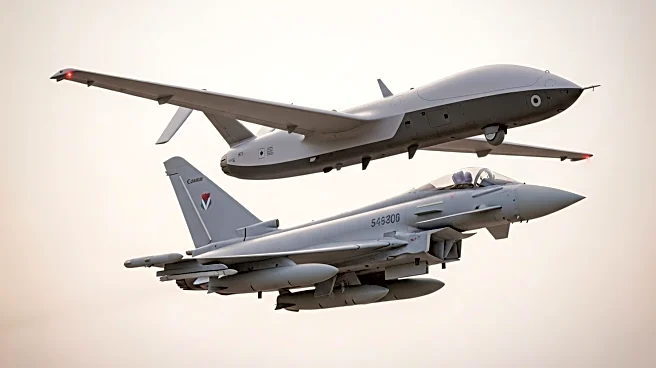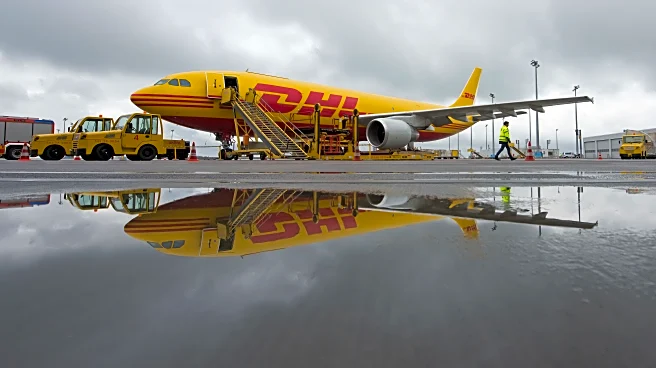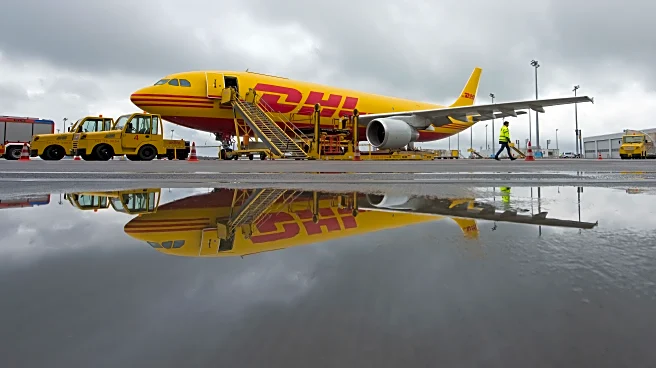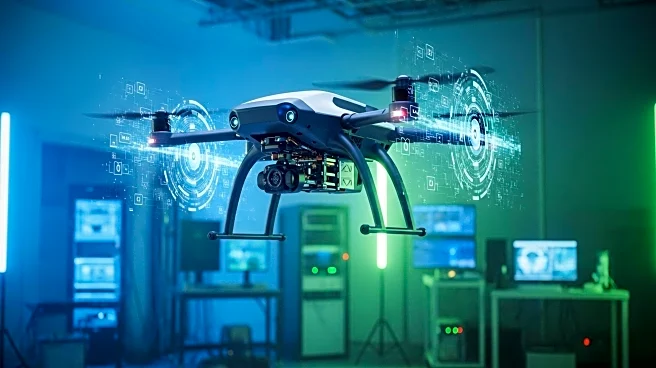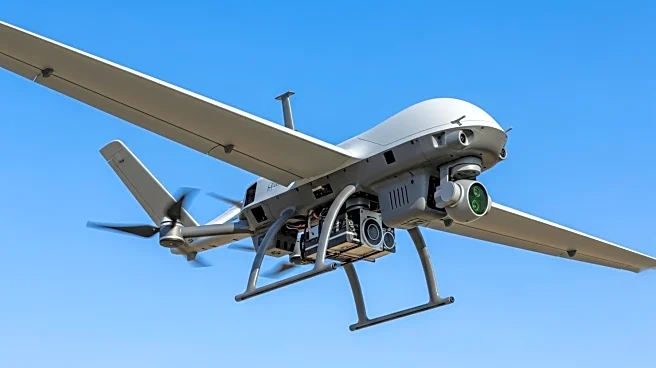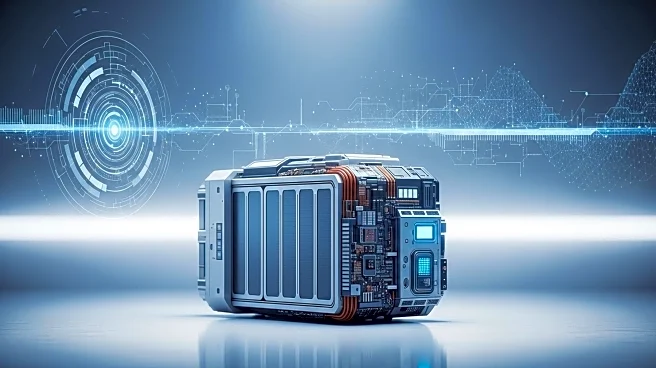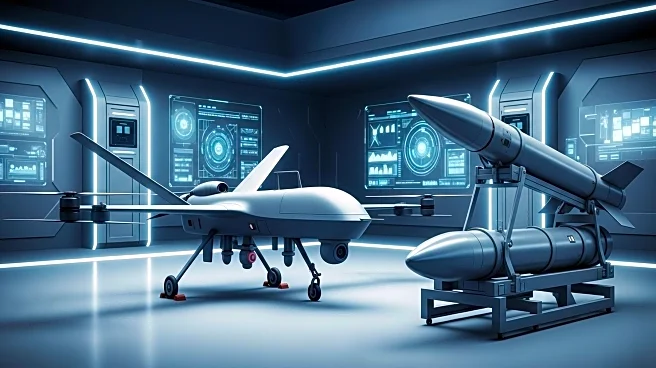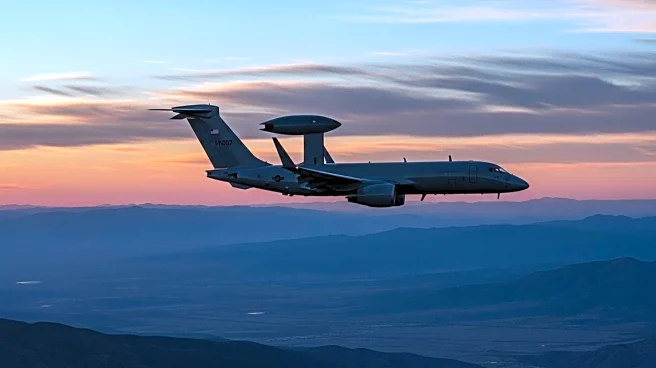What's Happening?
BAE Systems and QinetiQ have conducted tests to control unmanned aerial vehicles (UAVs) from a Eurofighter Typhoon combat aircraft as part of the UK's Project Hera. These trials, supported by the UK Ministry of Defence, have been conducted in a synthetic environment, with real-world testing anticipated in 2026. The trials aim to validate connectivity, interoperability, and human-machine interface, using simulated military datalinks like Link 16. This initiative is part of a broader effort to develop crewed-uncrewed teaming (CUC-T) capabilities, allowing uncrewed systems to perform tasks under the control of crewed assets.
Why It's Important?
The successful integration of UAV control from a Eurofighter Typhoon represents a significant advancement in military aviation technology. This capability enhances operational flexibility, allowing for more efficient and safer mission execution by keeping pilots out of harm's way. The development of CUC-T capabilities is crucial for modernizing military forces and maintaining a competitive edge in aerial combat. This technology could lead to cost savings and increased combat effectiveness, influencing future military procurement and strategy decisions. The collaboration between BAE Systems and QinetiQ highlights the importance of partnerships in advancing defense technology.
What's Next?
The next phase of Project Hera will involve transitioning from synthetic to real-world testing, contingent on further discussions with the UK Ministry of Defence. Successful real-world trials could pave the way for the integration of this technology into operational military units. The outcomes of these tests may influence future defense contracts and collaborations, as well as the development of new UAV platforms. As the project progresses, other countries may explore similar technologies, potentially leading to a shift in global military dynamics and strategies.

